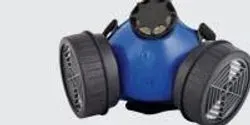Air Quality

A team of Clarkson University researchers is studying the possible links between reported hauntings and indoor air quality.

A building’s indoor air quality, known as IAQ—and now broadened to indoor environmental quality (IEQ)—has been a major issue in buildings since the early 1980s.

A team of researchers from the National University of Singapore’s (NUS) Faculty of Engineering has developed a cost-effective solution for the control of indoor air pollution, especially from the haze. The development of this system is timely in light of the World Health Organization’s (WHO) recent news on the risks of inhalation of particulate matter measuring less than 2.5 microns (PM2.5), which has been linked to a range of cardiovascular and respiratory ailments, including cancer. The new system is easy to use and ideal for use in a range of indoor environments.

Problem: With their critical needs for indoor air quality, power, temperature, humidity and other environmental conditions, labs traditionally have had a difficult time balancing the growing pressures for energy efficiency with the technical requirements of the required functionality within the facility.














